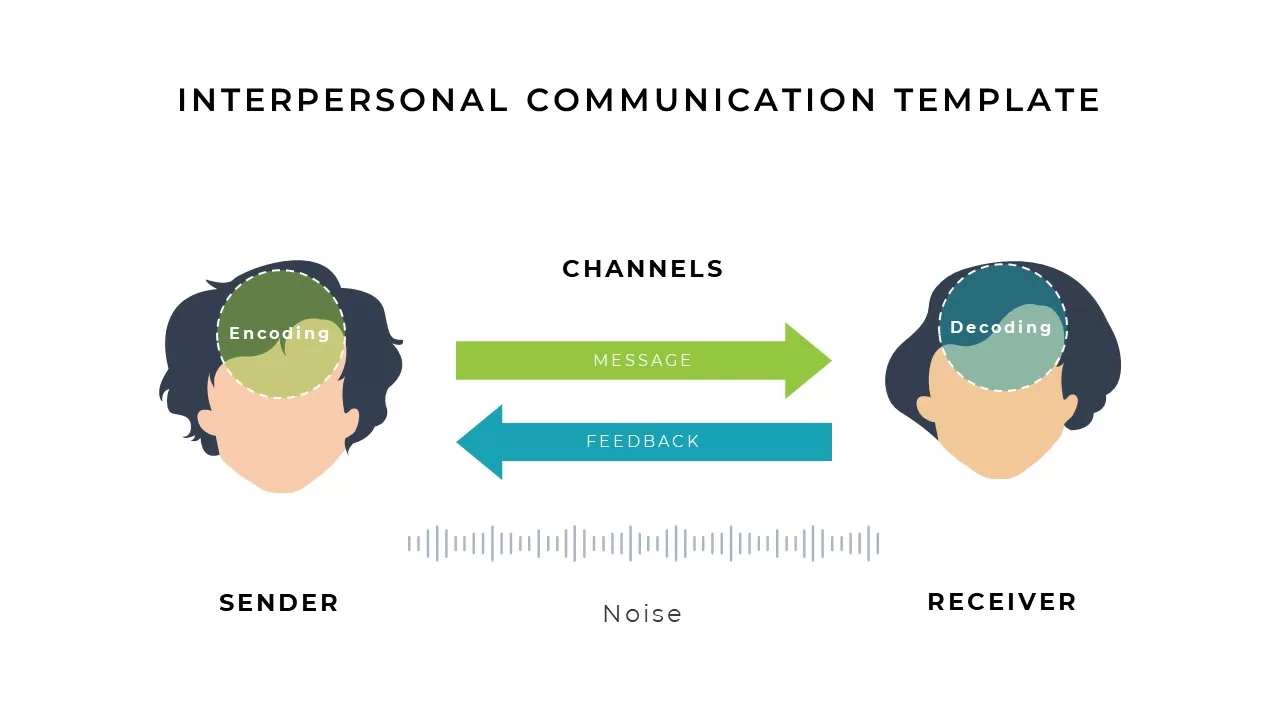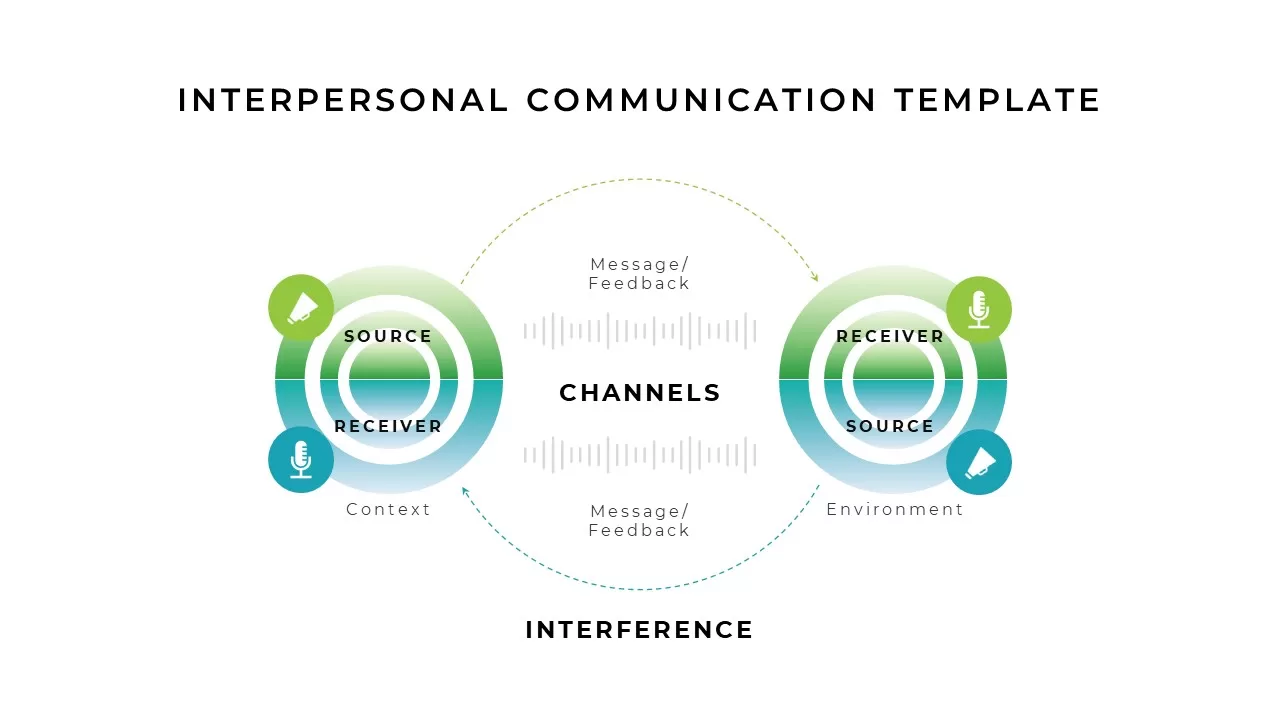powerpoint interpersonal communication slide


Description
This Interpersonal Communication Model slide template visually represents the key components of effective communication, focusing on the relationship between the source, message, receiver, and feedback. This slide employs a circular diagram with distinct elements such as "Source," "Receiver," "Message," "Feedback," and "Noise" to highlight the dynamic and interactive nature of communication. The use of color-coded segments—green for sender/receiver, blue for message channels, and light grey for noise—ensures that each step is clearly defined and easy to follow, making the communication process more understandable for audiences.The visual breakdown includes essential elements like encoding and decoding, along with the inclusion of environmental factors and interference (or "noise"), which could disrupt the flow of communication. The layout also emphasizes feedback loops and feedforward to showcase how communication is not just linear but cyclical, enabling dynamic interaction between participants. Ideal for illustrating communication theory in educational or professional settings, this slide simplifies complex concepts into a digestible format that can be easily integrated into presentations on communication strategies, psychology, or organizational behavior.Perfect for trainers, educators, HR professionals, and communication strategists, this slide is adaptable for a wide range of uses. Whether you are explaining the intricacies of interpersonal communication or outlining effective communication strategies within a team, this template is a clear, informative, and visually engaging tool that enhances audience understanding.Who is it for
Communication specialists, HR professionals, educators, and trainers will find this slide particularly useful. It is ideal for anyone working to improve interpersonal communication within organizations, classrooms, or workshops. This slide is also well-suited for psychology and communication studies students, as well as professionals looking to enhance their team collaboration and interaction strategies.Other Uses
Beyond its primary focus on interpersonal communication, this model can be applied to conflict resolution, leadership development, and team-building exercises. It can also be adapted for marketing and customer service communication strategies, where clear messaging and feedback loops are essential. Additionally, the visual layout is versatile enough to be used in academic presentations, webinars, and public speaking workshops to highlight the importance of feedback and effective messaging.Login to download this file

















































